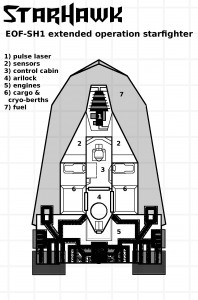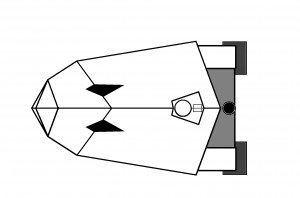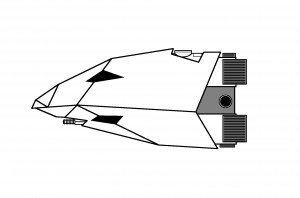Regarding Characters – The Wounded
I liked Mad Max – Fury Road quite a lot. There’s been a bit of discussion about it, which I find refreshing. I’m really happy to have something to say about a major motion picture other than, “Wow, another wooden, formulaic, plodding Hollywood film.” Having seen it twice the thing that sticks with me is the detailed, understated writing. One place where you see this in the the characters. Furiosa, Max, and Immortal Joe all have interesting, well-developed characters.
Think about the journey that Max’s character makes – he goes from being a completely anti-social animal to reconnecting with people around him. It’s not a character journey you see male leads play very often in film. Hurt Locker was similar in some ways. Sometimes a child’s character goes through something similar, like Newt’s character in Aliens. It is a compelling and timely story. In an age of endless global war the archetype is both familiar and incomprehensible.
Here he is, a person brutalized by living at the edge of his wits for ?? years. Major damage. PTSD or ghosts. Loss. Betrayals. Whatever happened to all those kids that he escaped Barter Town with. After all that he’s in bad shape psychologically. Remind you of anyone? John Rambo? Your buddy who went off to war in central Asia and came back all fucked up? Yourself? Fury Road holds a mirror up to our faces, but it’s not a reflection that we see very much on the silver screen.
Conversely, the character many expect to see in Max is played by Furiosa. She is like Max’s character in the first movie – she sees that shit’s fucked up and she decides to take matters into her own hands. She conspires with the other women, steals a war machine, and makes a break for it. A warrior turned outlaw, according to the laws and traditions of Immortal Joe’s Citadel. She too has had years of trauma, but she is active, while Max is reactive. It’s a reversal of traditional gender rolls. Also, as a person with a prosthetic hand, Furiosa is another warrior who has been wounded.
It’s a role that seemed a bit odd to me when I first saw it, as I hardly ever see it portrayed. Or at least not by male characters. Is that what has some people complaining about this film? The fact that Mad Max’s character isn’t some heroic superman? To those who decry this movie, my question is, “Have you even been watching these films?”
As a fan of film I was interested by how Fury Road’s departure from the seemingly-omnipresent narrative played out. I liked it quite a lot. And it was totally metal. Five horns up.
\m/. \m/. \m/. \m/. \m/.
Posted in Editorial, Review by Adam A. Thompson with 1 comment.
Traveller NPC – The Black Ship’s Marines
These Traveller characters could be used in your game as thugs, criminals, or pirates in any part of the galaxy.
I’ll be using them in my game as the crew of the Lord Jukt’s black ship Dark Star, a notorious Fast Trader class pirate ship in the Skein Reach.
Careers: Rogue 2 (enforcer) – Henchman
Attributes: Strength 10 (+1), Dexterity 7 (+0), Endurance 9 (+1), Intelligence 6 (+0), Education 4 (-1), Social Standing 5 (-1)
Skills: athletics 0, deception 0, gun combat (any) 1, melee 1, recon 0, stealth 1, streetwise 1, (referee’s choice) 0
Armor: 15
Equipment: improved cloth armor, torso protector, light infantry helmet, firearm (pistol, carbine or rifle that matches the henchman’s gun combat skill and mission), hand weapon (knife, stunstick, arc-field claw, &ct.), 1,500 credits
Posted in Character, Traveller and tagged NPC by Adam A. Thompson with no comments yet.
EOF-HK1 Starhawk Extended Operations Fighter
30 tons – 25.3854 MCr.
Designed by the Empire to be carried by WPR-4F-ER warp boost rings, Starhawks can travel four parsecs at a jump. Because of this they are used extensively as armored couriers, forward scouts, or to transport small teams of agents. Some Imperial carrier fleets will scout nearby parsecs with patrols of these ships. They also serve well as ground attack fighters. Their versatility and the inclusion of a tiny galley and fresher in the cabin led to the HK1 gaining the nickname Kitchen Sink, as in “I’m on kitchen sink duty this week scouting the next sector.”
The three ton crystaliron armored hull acts as a lift body, making the Starhawk a flying wing with excellent atmospheric performance. Built tough, they can generally survive anything short of particle beam fire. Under the armor the four ton hydrogen fuel tanks provide a secondary layer of protection for the central cabin. This heavy frontal armor profile excludes a canopy or windows – instead views from sensors on the hull are presented to the pilot in a holographic display that integrates telemetry and targeting data.
As extended-operations fighters Starhawks feature extras that allow the pilot some comfort during missions. Instead of a cramped cockpit the fighter is piloted from a control cabin. If necessary, a humanoid can turn off the artificial gravity and sleep in the small fresher, per standard Imperial patrol procedure on these craft. There are also two cold berths for transporting passengers, extra crew, or for the pilot’s use during long flights. These cryo-berths can be set to automatically wake the occupants at a set time or as the ship is coming out of warp. There is also cargo capacity for three tons. The cargo spaces are equipped with small seats that fold into the walls, allowing the Starhawk to transport a small fire team.
They are also equipped with a repair or astromech droid, providing in-space repair ability and/or a robotic co-pilot. These can be replaced by a drone but the onboard computer does not usually have the capacity to run a repair program, leaving the pilot to operate the repair drone.
Other extras include probe drones and an airlock, giving them capability to perform search, rescue and repair operations. Often patrol duty will involve picking up or dropping off probe droids to be retrieved by the next patrol.
Starhawks are a TL 12 standard design subject to the %10 cost discount.
System – Details – Tons – Cost (MCr)
Hull – 0 points, streamlined – 30 tons – 1.43 MCr.
Structure – 1 points
Armour – 8 points crystaliron – 3 tons – 0.286 MCr.
Power Plant – class sM – 5.1 tons – 9 MCr.
Maneuver Drive – thrust 8 – class sM – 7 tons – 14 MCr.
Control Cabin – 3 tons – 0.15 MCr.
Crew – 1 pilot
Computer – model 1 – rating 5 – 0.03 MCr.
Software – fire control 1, library – 2 MCr.
Electronics – basic civilian: radar, lidar – 1 ton – 0.05 MCr.
Weapons – fixed mount TL10 pulse laser (long range, accurate, high yield) – 1 ton – 0.6 MCr.
Fuel – 4 weeks of operations – 4 tons
Cargo Capacity – 3 tons
Extras – airlock – 1 ton – 0.2 MCr.
– repair drone (1) – 0.3 tons – 0.06 MCr.
– probe drones (3) – 0.6 tons – 0.3 MCr.
– low berth (2) – 1 ton – 0.1 MCr.
Maintenance Cost (monthly) – 2,115 Cr.
Life Support Cost (monthly) – 200 Cr.
Posted in Starship, Traveller by Adam A. Thompson with no comments yet.
Warp Boost Rings
“Interstellar travel, kid. Some call it jumping, or warp, lightspeed, FTL, hyperspace, whatever. If you want to get out of this system, you need a ship that can do it. Like mine.” – Captain Liv Thunson, USS Sabre Tiger
Designed to give jump capabilities to smaller ships, warp boost rings are spacecraft that consist of a self-contained jump drive and fuel supply in a chassis that can dock with and carry a variety of small ships. Many designs use a ring-shaped chassis and interior docking clamps to accommodate a variety of ships under 60 tons, as long as they are small enough to fit inside the ring. Other designs use a sled-like chassis that the smaller ship sits atop.
As the jump ring hulls do not have maneuver drives of their own they rely on the thrust of the attached small ship for sub-lightspeed travel. Thrust will need to be recalculated according to the combined ships’ new tonnage and the maneuver thrust rating of the small ship. For example, a 50 ton modular cutter with thrust 4 docked with a WPR-A-2 are 90 tons combined and move at thrust 2. Because for most small ships half speed is the result, a handy way to determine the new thrust quickly is to simply halve the ship’s thrust while docked.
Due to poor aerodynamic characteristics these hulls give the docked ship -1 DM on pilot skill checks when in atmosphere. For this reason these rings are typically left parked at orbital refueling stations if the docked ship heads into atmosphere. They are nevertheless equipped with landing gear.
WPR-A-2 Warp Boost Ring – 100 tons – 19.044 MCr.
A common sight in the interior of the Imperium, the WPR-A3 allows small spaceships of up to 60 tons to dock and travel at warp 2. They often carry skiffs or boarding shuttles between systems.
When used to transport ships of 10 tons or less, their FTL range is extended to jump-3.
When carried on larger ships, these rings take up 40 tons of hangar space.
Monthly maintenance costs 1,587 Credits. Standard design (%10 discount).
100 ton hull – standard (ring) – 2 MCr.
Hull – 2 points
Structure – 2 points
Armor – none
Power Plant – A – 4 tons – 8 MCr.
Jump Drive – A – jump-2 – 10 tons – 10 MCr.
Fuel – one jump-2 and two weeks of operation – 22 tons
Computer – model 2 – rating 20 – 0.16 MCr.
Software – jump control 2 – 0.2 MCr.
Docking for small ship up to 60 tons – 4 tons – 0.8 MCr.
WPR-F-4 Warp Boost Ring – 100 tons – 39.51 MCr.
A longer-range version of the WPR-A-2, this chassis is mainly used to quickly move small ships such as modular skiffs or retrieval boats across the cosmos at warp 4. WPR-F-4 are frequently used to carry Starhawk extended range fighters.
When carried on larger ships, these rings take up 70 tons of hangar space.
Monthly maintenance costs 3,292 Credits. Standard design (%10 discount).
100 ton hull – standard (ring) – 2 MCr.
Hull – 2 points
Structure – 2 points
Armor – none
Power Plant – B – 7 tons – 16 MCr.
Jump Drive – B – jump-4 – 15 tons – 20 MCr.
Fuel – one jump-4 and two weeks of operation – 44 tons
Computer – model 4 – rating 20 – 5 MCr.
Software – jump control 4 – 0.4 MCr.
Docking for small ship up to 30 tons – 1 ton – 0.5 MCr.
Posted in Starship, Traveller by Adam A. Thompson with no comments yet.


